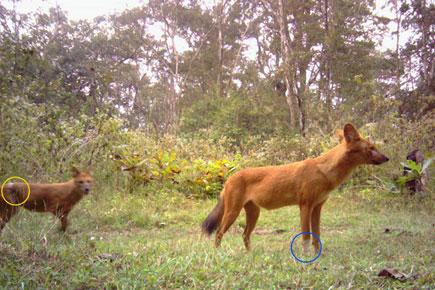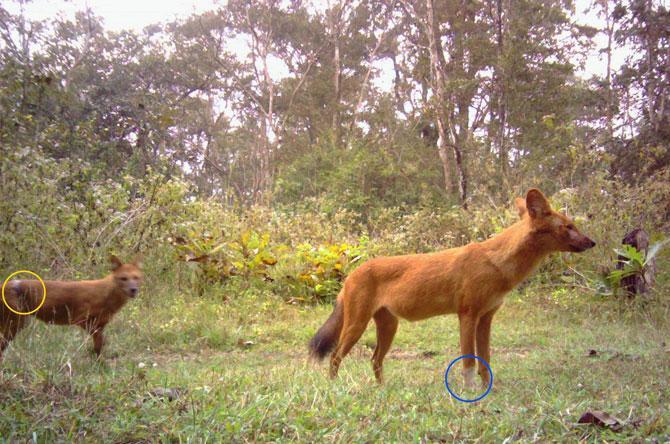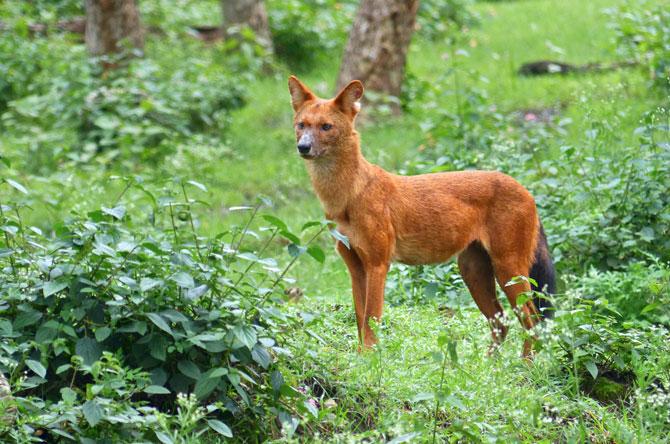A new study led by scientists from Wildlife Conservation Society-India Program, Centre for Wildlife Studies (Bangalore), and University of Florida, USA, presents the first home-range size estimate of Asiatic wild dogs or ‘dholes’ based on camera trap surveys

 Pic/Ullas Karanth
Pic/Ullas Karanth
ADVERTISEMENT
A new study led by scientists from Wildlife Conservation Society-India Program, Centre for Wildlife Studies (Bangalore), and University of Florida, USA, presents the first home-range size estimate of Asiatic wild dogs or ‘dholes’ based on camera trap surveys.
The study, based on intensive camera-trap surveys conducted in Nagarahole and Wayanad wildlife reserves in the Western Ghats India, was part of a long-term project on tiger population dynamics in the region.
Lead author of the study Arjun Srivathsa, who is a doctoral student at the University of Florida says that, "Typically, radio-telemetry is used to obtain information on home-range sizes of large carnivores such as dhole. This is expensive and requires careful handling of animals. In contrast, our estimates are generated through innovative use of non-invasive and relatively inexpensive camera-trap pictures."
 Pic/Shekar Dattatri
Pic/Shekar Dattatri
From November 2014 to January 2015 (45 days), the researchers set-up and monitored camera traps which yielded incidental photographic captures of dholes. Unlike tigers or leopards, individual dholes cannot be uniquely identified from camera-trap photographs because they do not have pelage patterns or natural body markings. Yet the researchers were able to identify two individuals in a pack of five animals, based on distinct markings on their pelage, enabling them to map locations of the pack during the survey period.
Dholes are among the least studied large carnivores in the world. Unlike many other social carnivores, dholes occur at low densities in dense tropical forests. They are wary, difficult to capture and radio-collar, and thereby pose several logistical challenges in the field for tracking their movements or studying their behaviour. For the first time in India, their home-range size (roughly 85 sq. km) has been estimated based on non-invasive camera trap surveys.
 Subscribe today by clicking the link and stay updated with the latest news!" Click here!
Subscribe today by clicking the link and stay updated with the latest news!" Click here!






